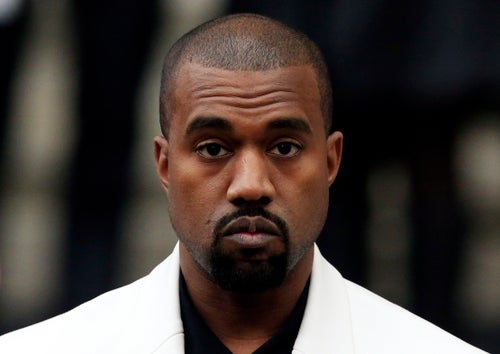

Was the 400 years of the transatlantic slave trade really a choice for the millions of shackled men, women and children who made that treacherous journey across the Atlantic? That’s what Kanye West seemingly said yesterday. He’s since said that’s not what he meant but regardless of what Kanye actually thinks, it raises an important point. Are we truly aware of what slavery was – and that it still exists today?
First things first, slavery is not – and never has been - a choice for the people who are trapped in it.
Here’s why what Kanye said should make us all think harder about slavery and the choices we make.
During the transatlantic slave trade millions of Africans were forcibly transported to the US and Europe against their will, enduring horrendous conditions that meant many did not make it through the voyage. What many of us don’t know is that there are more people in slavery today than in the 400 years of the transatlantic slave trade put together. Over 40 million men, women and children are living in slavery worldwide right now.
“Today, there is a choice in slavery, but it’s not people in slavery who have the choice – it’s us. Whether we are artists, musicians, politicians, corporates or consumers, we have the choice to use our voice and power to bring freedom”
Slavery is brutal. The chains of slavery today are rarely the physical shackles that we see in historic images of transatlantic slave ships, but they’re no less harsh. Modern slave owners control people through violence, deceit and fear.
Today slavery takes many forms – from girls being drugged, threatened and sold into brothels where they are raped every day, to men in Thailand being tricked into working on fishing vessels where their passports are taken, they are violently beaten and forced to work 18 hour days to fish the prawns for your curry.
It is hard to stomach the fact that many of the estimated 24.9 million people in forced labour slavery today are making everyday products that we buy here in the UK. Everything from rice, to mobile phone batteries, to clothes, roses and chocolate.
Sickeningly, one in four slaves today are children. Children who should be in school and able to play, but who instead face violence and long hours of unpaid work.
Ajay and his two teenage friends worked from 8am to 11pm seven days a week in a factory making women’s high heels. He worked with scalding-hot machinery and breathed harsh chemicals all day. He ate and slept in the same room where he worked. Ajay had his freedom, choices and childhood stolen from him.
When he was rescued by NGO International Justice Mission and local police he said: “In four years, I was never allowed to visit my home, although I requested it many times. I thought of running away, but others who had run away were brought back and beaten with iron rods, tortured with long needles and locked in a room for several days.”
Like the transatlantic slave trade did years ago, slavery today still impacts entire generations. There are families in slavery now who have been captive for generations – often still trying to pay off one small debt that a grandparent took years ago. Children are being born into captivity. Kalpanna had to watch her baby boy fall sick and pass away because she was enslaved at a woodcutting facility and she was not allowed any medical help. She had no choice but to watch this happen, helpless to act.
Slavery has always been a cruel violation of people’s rights and freedom. Hundreds of years ago and today, the people who chose slavery were not those who were victims of it, but the slave-traders and traffickers who chose to treat other people as commodities to buy and sell.
Today, there is a choice in slavery, but it’s not people in slavery who have the choice – it’s us. Whether we are artists, musicians, politicians, corporates or consumers, we have the choice to use our voice and power to bring freedom.
We can choose to stay silent as millions of men, women and children are sold – or we can choose to fight until all are free.
Find out more: www.ijmuk.org